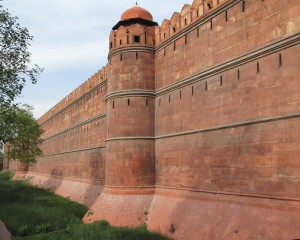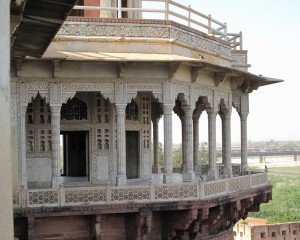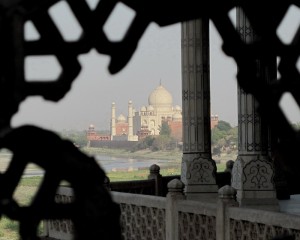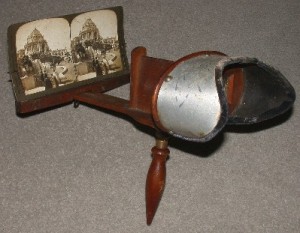Post Category Paul on 21 Jun 2010 12:07 am
“Stereogram of the Gray Fort, in the Days of Her Glory” in Fantasy Magazine
I’m delighted to announce that my story “Stereogram of the Gray Fort, in the Days of Her Glory,” has been published in Fantasy Magazine. I’m a big fan of this publication, and I’m very happy this piece has found a good home there.
A couple of different things came together to inspire this story. The first was a trip. Last spring I was in India on business for the Day Job. I’ve done a fair amount of traveling, but everything people had been telling me about India turned out to be true, and I’ve never been anywhere that challenged me or inspired me so much in such a short time. I was cooped up in offices and hotels for most of my stay, but I managed to steal some time for myself and get out and look around.
The Gray Fort in my story is modeled after complexes built by Mughal emperors in the 1500’s and 1600’s. They’re called “forts” today, but they’re the size of towns, surrounded by moats and immense walls, and they contain military garrisons, palaces, audience halls and mosques, all in various states of renovation and ruin.
 |
 |
The same people built the Taj Mahal, which is right down the road from Agra Fort (and to my surprise, the Taj Mahal surpassed all the hype I’d heard about its beauty).
For a few dollars I hired a guide for a day. He was a high school History teacher who moonlighted on weekends (and probably made more this way than from his regular salary). He had a master’s degree and spoke five languages well enough to conduct day-long tours in them, including Japanese, which he had taught himself. He had given his spiel so many times that he compacted every list of architectural features and souvenirs for sale into one long, sing-song word. It was a surprise to him that I didn’t want him to carry my camera and take snapshots of the scenery for me. (He would occasionally lead me through areas crowded with hawkers, and each time he would instruct me beforehand that although he would appear to be encouraging me to buy from them, that was just because he had to interact with them on every tour, and I should under no circumstances give them any money.) Whether he intended it or not, every time he spoke he drew my attention to the fact that here was a talented, dignified man, from a culture that had achieved marvelous things, but the only way he could support his family was to show rich foreign idiots around the remnants of the era when his home town was a seat of power.
In my story, the humans’ relationship to the old fortress, and to the greatness they’ve lost, and to the colonial powers that rule them, all stem from this impression.
The part about the stereogram came to me in a dream that involved a stereoscope – a Victorian-era parlor gadget with lenses that show the viewer two similar photographs at once, creating the combined effect of a single three-dimensional image. In my dream though, a different person was looking through each lens, and somehow they both understood the combined picture. I worked backward from there to shape a relationship that would allow that to happen.
3 Responses to ““Stereogram of the Gray Fort, in the Days of Her Glory” in Fantasy Magazine”


on 21 Jun 2010 at 9:01 am # Matt Kressel
Paul, this is a great story, and I’m glad Fantasy Magazine picked it up. I’m sure it will get noticed.
on 14 Jul 2010 at 7:48 pm # Glenn Bretz
An absolutely incredible story I’m sure to remember for quite some time.
Glenn
on 13 Nov 2010 at 12:14 am # Re: Stereogram of the Gray Fort, in the Days of Her Glory « Writing Every Day
[…] after the story is allowed to take shape, do we get to the conceit that spawned it: a stereogram that can only be comprehended by a bonded pair. This stereogram is […]